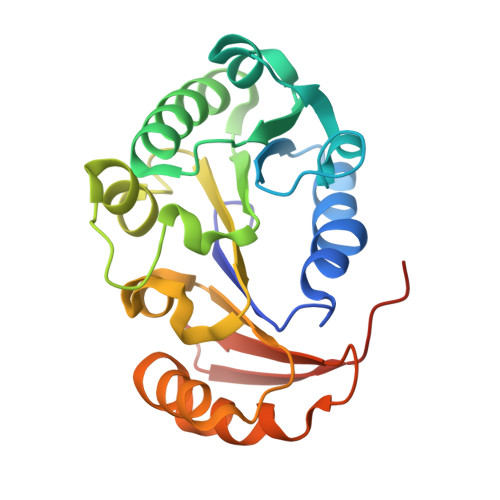The Structure of the NTPase That Powers DNA Packaging into Sulfolobus Turreted Icosahedral Virus 2.
Happonen, L.J., Oksanen, E., Liljeroos, L., Goldman, A., Kajander, T., Butcher, S.J.(2013) J Virol 87: 8388-8398
- PubMed: 23698307
- DOI: https://doi.org/10.1128/JVI.00831-13
- Primary Citation of Related Structures:
4KFR, 4KFS, 4KFT, 4KFU - PubMed Abstract:
Biochemical reactions powered by ATP hydrolysis are fundamental for the movement of molecules and cellular structures. One such reaction is the encapsidation of the double-stranded DNA (dsDNA) genome of an icosahedrally symmetric virus into a preformed procapsid with the help of a genome-translocating NTPase. Such NTPases have been characterized in detail from both RNA and tailed DNA viruses. We present four crystal structures and the biochemical activity of a thermophilic NTPase, B204, from the nontailed, membrane-containing, hyperthermoacidophilic archaeal dsDNA virus Sulfolobus turreted icosahedral virus 2. These are the first structures of a genome-packaging NTPase from a nontailed, dsDNA virus with an archaeal host. The four structures highlight the catalytic cycle of B204, pinpointing the molecular movement between substrate-bound (open) and empty (closed) active sites. The protein is shown to bind both single-stranded and double-stranded nucleic acids and to have an optimum activity at 80°C and pH 4.5. The overall fold of B204 places it in the FtsK-HerA superfamily of P-loop ATPases, whose cellular and viral members have been suggested to share a DNA-translocating mechanism.
Organizational Affiliation:
Institute of Biotechnology, University of Helsinki, Helsinki, Finland.


















